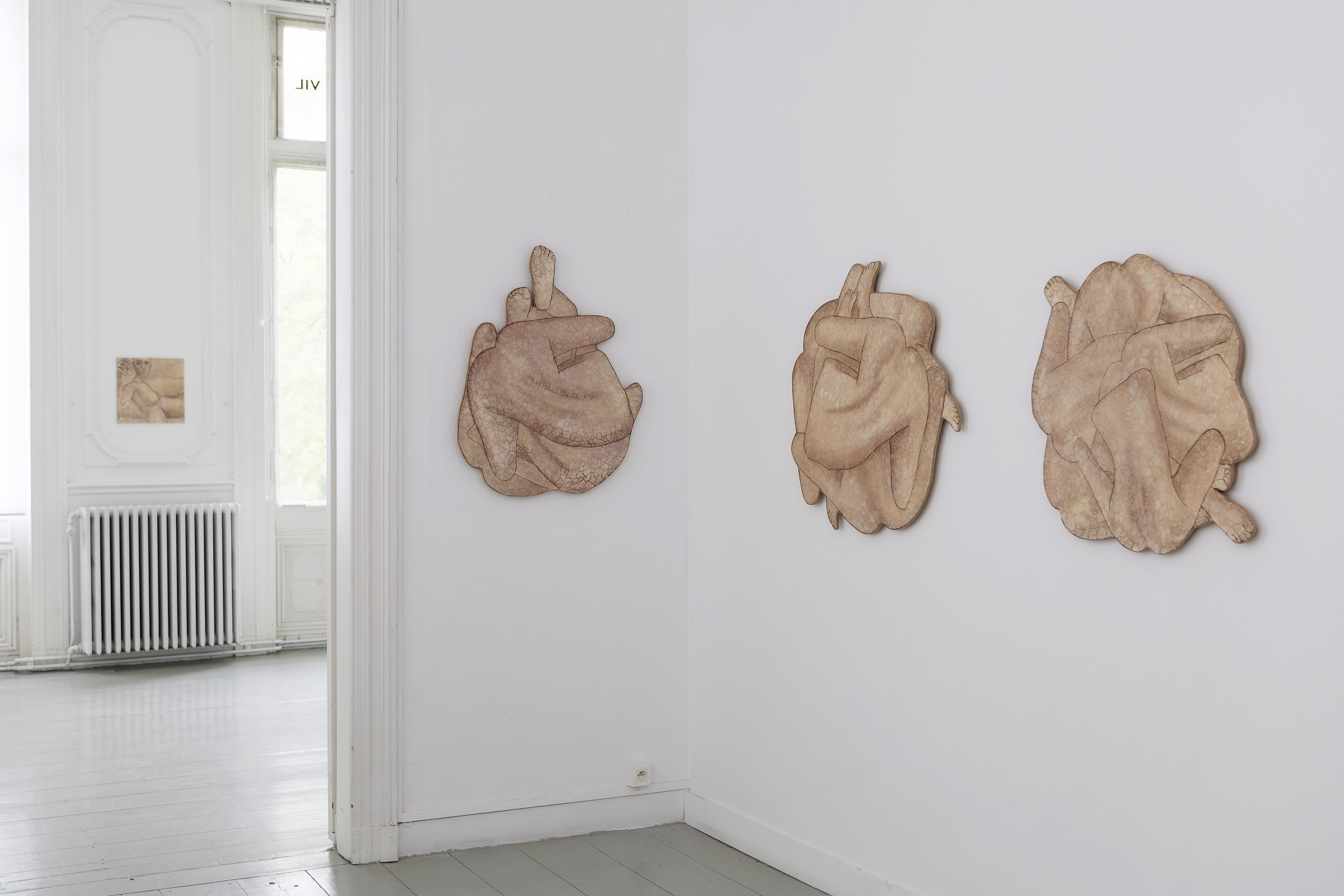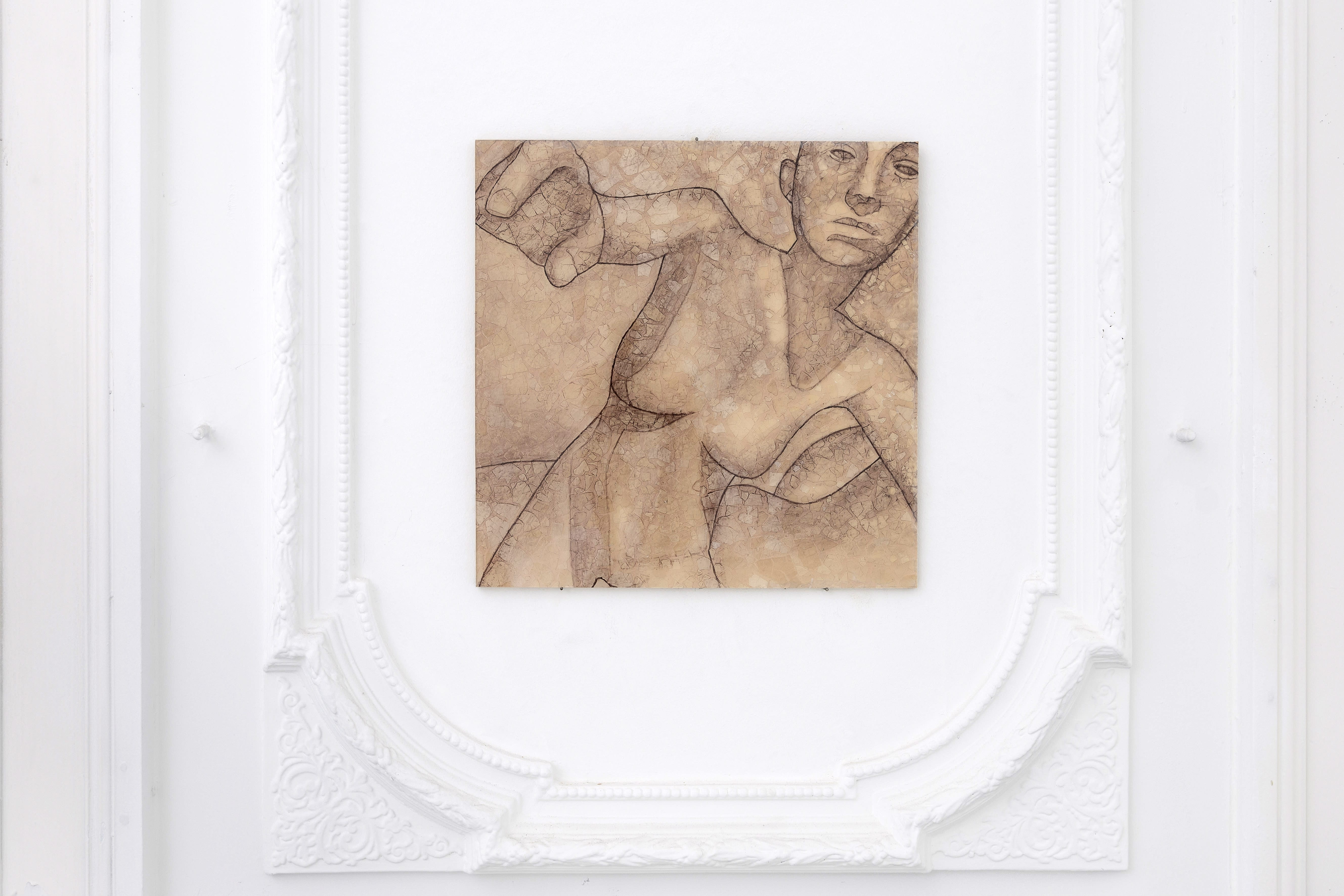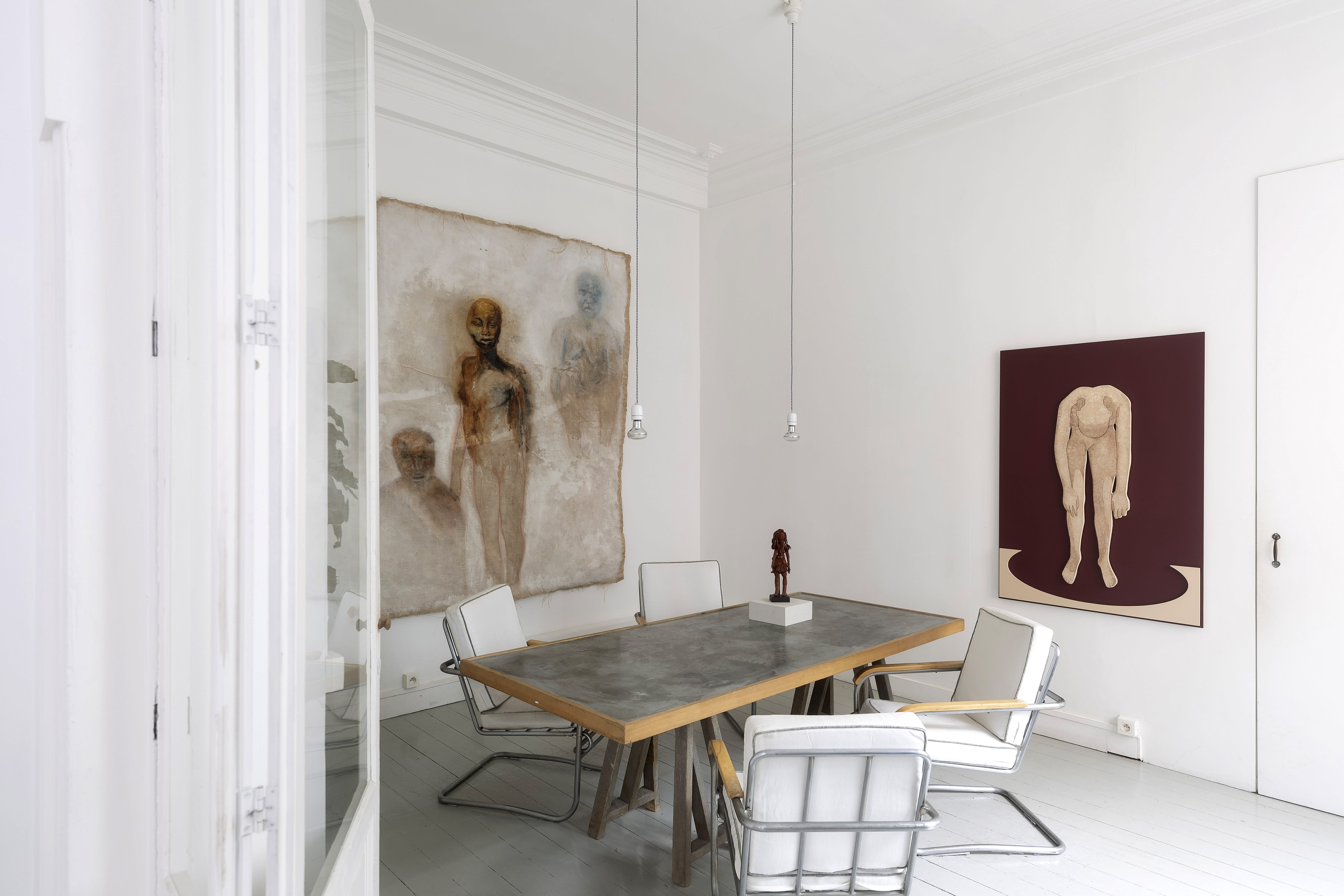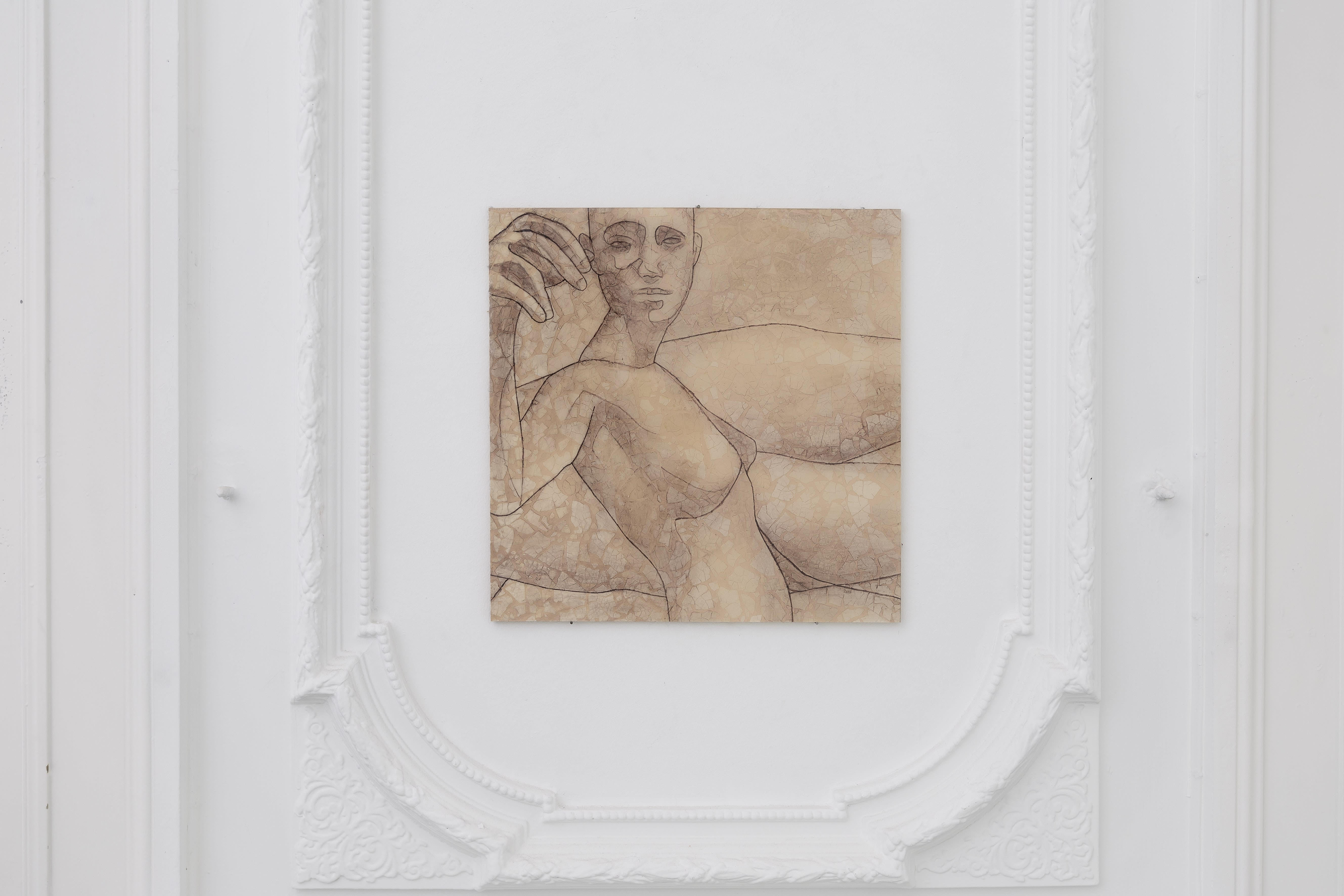
Could you tell us about your early experiences with art and what led you to study at the School of Fine Arts in Casablanca?
My artistic journey began in my childhood, in a Morocco vibrant with a wealth of cultural richness. The splendor of art and the intensity of emotions conveyed by materials have always captivated me. By venturing into various forms of artistic expression, I developed a particular attachment to these fragile materials, true resonators of the complexity of the human condition. I was fortunate to grow up within artistic associations and foundations, where my first steps in music took place. This immersion nurtured my artistic sensitivity and broadened my creative horizon. Subsequently, my training at the conservatory of music and dance provided me with a deep understanding of art and performance, a foundation on which I could build my reflections. My decision to join the École des Beaux-Arts in Casablanca was driven by a strong desire to formalize my knowledge and refine my practice. This emblematic place, frequented by major figures such as Farid Belkahia,
Mohamed Melehi, and Mohamed Chabâa, embodies a meeting between heritage and modernity. Studying in such a creative environment allowed me to deepen my mastery of techniques while inviting me to explore new contemporary materials.
How has growing up in Morocco influenced your artistic style or themes?
Morocco, with its rich cultural heritage, has nourished my imagination. The vibrant colors, sounds, and shapes have shaped me. Evolving in an environment where art occupies an essential place exposed me to artistic narratives of identity and human experience. These influences are woven into my work, where I seek to capture vulnerability, address resilience, and question suffering. My choice to work with fragile materials, like eggshells, reflects this quest. Their delicacy evokes both the beauty and precariousness of life. This duality—strength and weakness—is at the heart of my approach, fostering a dialogue between the past and the present while revealing the invisible scars that each soul carries.

Were there any artists, movements, or experiences that particularly shaped your approach to art during your education?
At the École des Beaux-Arts in Casablanca, I was profoundly influenced by the artistic movement of the 1960s, embodied by figures such as Farid Belkahia, Mohammed Chabâa, and Mohammed Melehi. This movement was essential to my understanding of Moroccan art. The school, the epicenter of this dynamic, offered me an environment conducive to experimentation. The innovative ideas of these artists on cultural identity and the use of materials resonated with my aspirations, encouraging me to explore how human fragility and resilience can be expressed through unconventional materials. Discussions, workshops, and exhibitions enriched my artistic vision, allowing me to appreciate art as a means of personal and collective expression. Their way of redefining the codes of art in Morocco inspired me to develop my own voice, centered on vulnerability and the complexity of the human experience. These influences, coupled with a stimulating environment, shaped my artistic approach, pushing me to question the role of art in society and to explore narrative materials of fragility and strength.
Can you walk us through your creative process? How do you usually begin working on a new piece?
My creative process begins with introspection, where I connect to themes of vulnerability and resilience. I observe my surroundings to draw inspiration from nature and human interactions. Once a theme is identified, I sketch my ideas, experimenting with various materials. When I use eggshells, I prepare and integrate them into my sketches, reflecting on their fragility as a metaphor for the human condition. Once my vision is clear, I move on to creation in my studio, seeking to balance structure and spontaneity. Each piece reflects my personal journey, the product of a process that is both rigorous and intuitive, capturing the complexity of human emotions.

What drew you to work with eggshells as your primary medium, and how do you source and prepare them?
I am drawn to eggshells for their fragility and symbolism, representing vulnerability and resilience. Their delicacy contrasts with the deep emotions in my art, and the preparation
process adds a tactile dimension to my creative expression. I consciously collect eggshells, prioritizing those from my kitchen or purchased at local markets. This approach highlights the importance of sustainability and creates a personal connection with the materials I use. Once collected, I carefully clean the shells to prepare them for the artistic process.
Your work involves fragile materials like eggshells—how does this fragility reflect the themes you explore in your art?
The fragility of materials, particularly eggshells, is at the heart of my artistic approach and resonates deeply with the themes I explore. By choosing to use these delicate materials, I aim to symbolize the inherent vulnerability of the human condition. Each eggshell embodies not only physical fragility but also the emotional wounds and invisible scars that each person carries. Through this fragility, I aspire to evoke universal emotions related to suffering, loss, and resilience. Works created from eggshells invite the viewer to reflect on their own vulnerability and the challenges we all face. This approach materializes abstract concepts, creating a visual dialogue between the work and the audience.

The death of your mother seems to have had a profound impact on your work. How did that personal loss shape the themes of fragility and suffering in your art?
The loss of my mother was a turning point in my life and my artistic approach. This ordeal confronted me with the brutal reality of the fragility of human existence. Through my art, I sought to express these complex emotions using fragile materials such as eggshells, which symbolize human vulnerability. Each work I create becomes a space for reflection on these personal experiences, transforming this pain into a form of artistic expression. It urges me to approach the fragility of life with honesty, while acknowledging that suffering is an integral part of our human condition.
What role does personal experience play in your creative expression versus the more universal themes of fragility and disease?
Personal experiences are at the core of my creativity, acting as a starting point for my artistic exploration. Every significant moment in my life, whether it be the loss of a loved one or everyday challenges, inspires me to translate my emotions into visual works. These intimate experiences become metaphors for the human condition and our struggle against the fragility of existence. I also aim to create works that resonate with universal themes such as vulnerability, suffering, and resilience. By using materials like eggshells, I symbolize human fragility and evoke reflection on our shared wounds and common hopes.

Why do you think eggshells are a powerful metaphor for human fragility and vulnerability?
Eggshells embody a powerful metaphor for human fragility and vulnerability. Their delicate, porous structure evokes the ephemeral nature of our existence. Each shell, protective yet easily breakable, echoes the vulnerability of our emotions. These shells bear scars and fractures, witnesses to each individual’s struggles. These imperfections are marks of suffering and resilience. By integrating them into my art, I seek to reveal this fragility, affirming that it is an integral part of our humanity. The process of transforming these shells into visual works reflects a journey of healing. Through this metamorphosis, I invite viewers to contemplate their own fragility and how they confront life’s challenges. Thus, eggshells become a symbol of our shared humanity, illustrating our capacity to transcend pain and draw strength from our vulnerability.
Is there a specific emotion or message you hope viewers take away from your work?
Through my work, I aspire to awaken an awareness of the inherent fragility of the human experience. The emotions I explore, such as suffering and vulnerability, go beyond the personal; they are rooted in universal themes that unite us all. I invite the viewer to reflect on the complexity of the human condition. Each artwork thus becomes a space for exploration. By offering my creations, I hope that viewers will discover resonances with their own experiences, prompting them to contemplate the fragility and strength that coexist in each of us. My art aims to be a mirror of our human narratives, a tool for weaving connections and sharing our emotions.

How do you see your work evolving in the future? Are there new themes or materials you’re interested in exploring?
In the future, I plan to deepen my exploration of themes related to human fragility. While eggshells remain at the core of my practice, I feel a growing curiosity about integrating new materials that evoke similar notions of vulnerability. These elements could bring new dimensions to my works, fostering visual and tactile interactions that highlight the messages I wish to convey. This evolution will allow me to enrich my artistic language while remaining true to my initial vision. I am excited about exploring these new paths and discovering how they will nourish my art and deepen my understanding of the human condition.
Do you have any upcoming projects or exhibitions beyond the AKAA art fair that you’re excited about?
Yes, several exciting projects await me beyond the AKAA art fair. I will participate in the first National Salon of Casablanca, where I will have the honor of presenting my works alongside other talented artists. This event will be a wonderful opportunity to engage with the public and exchange ideas about our artistic practices. Additionally, in November, I will participate in a collective exhibition that will give me the chance to explore new themes and share my artistic vision with a broader audience. Finally, I am particularly enthusiastic about contributing to a charitable sale for a foundation in Morocco. This event will allow me to support a cause close to my heart while showcasing my work. These projects represent enriching opportunities to interact with other artists and raise public awareness of important issues through art.
